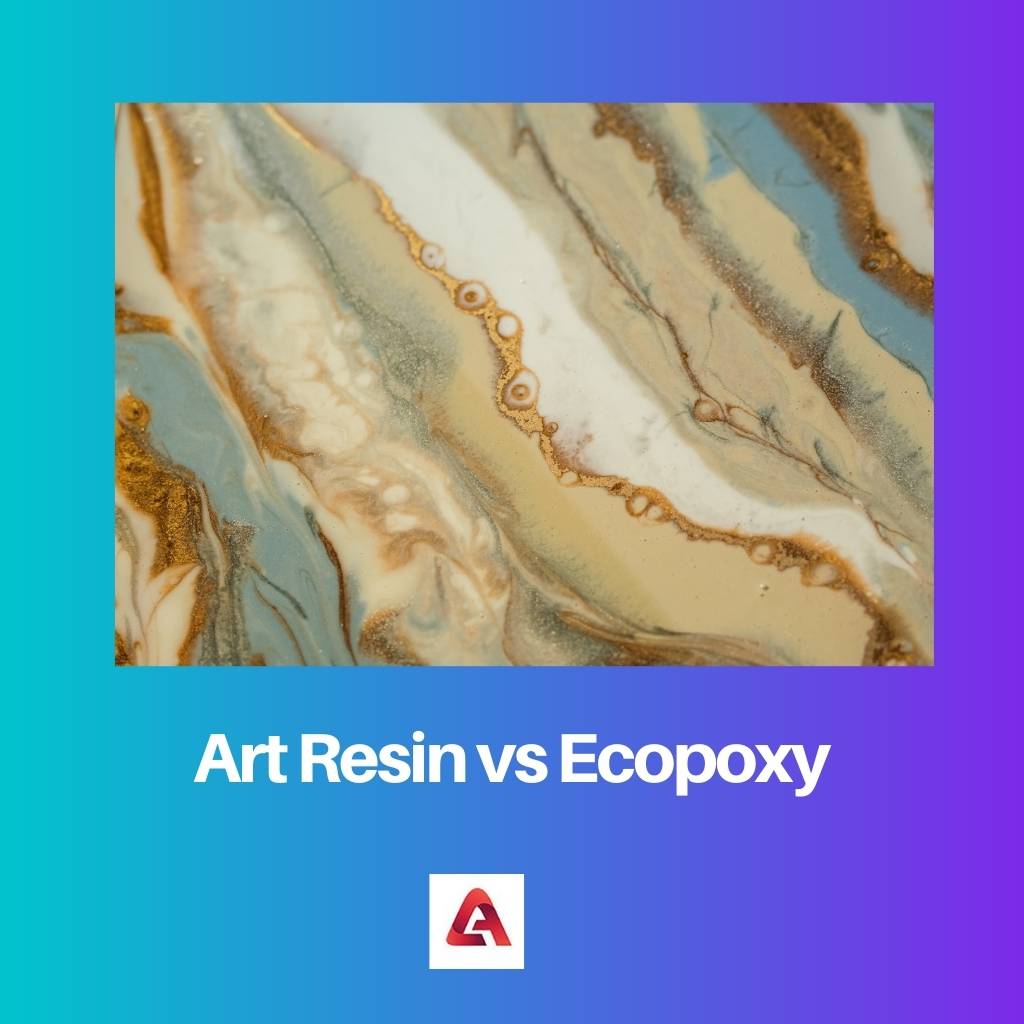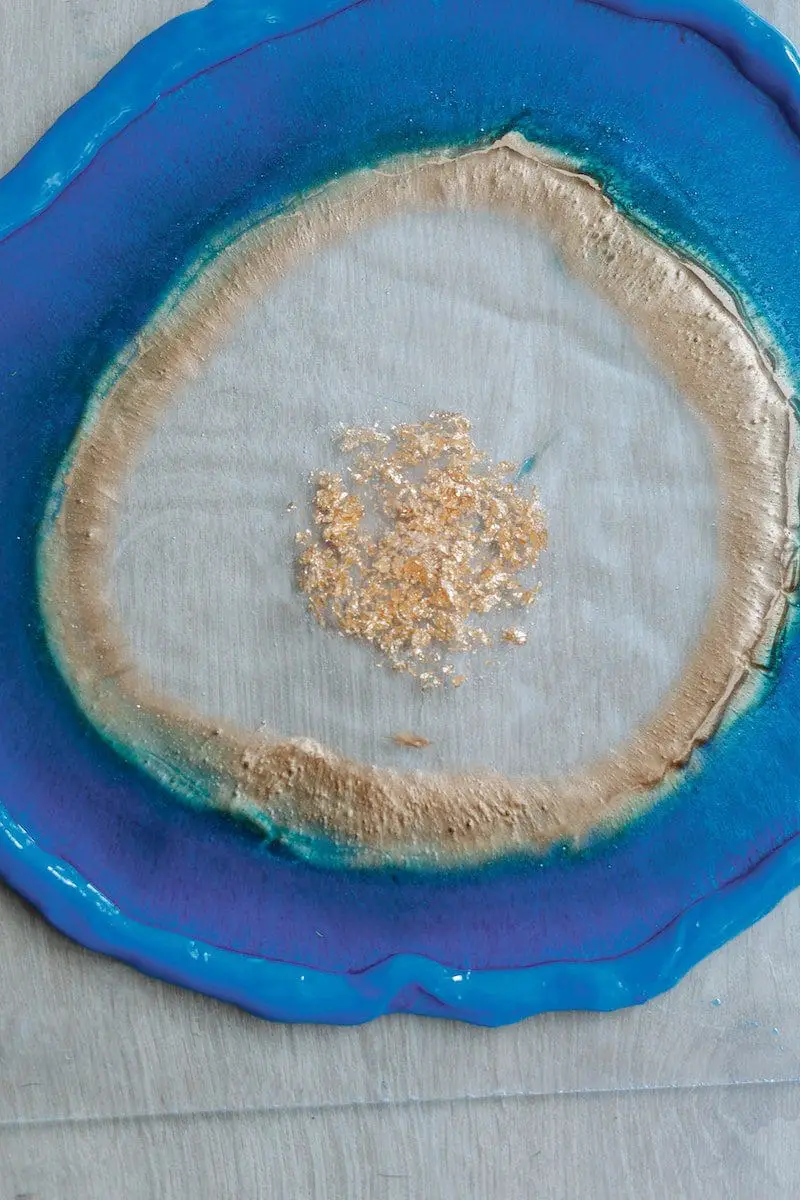Both Art resin and Ecopoxy are very popular among the DIY community, artists, and craftsmen. Both brands place among the best brands in the resin industry. Art resin is a newly arrived type of synthetic resin that offers the best quality.
Both brands have some minor differences in a few terms.
Key Takeaways
- Art resin is a high-gloss, clear epoxy resin that is perfect for creating art, while ecopoxy is an eco-friendly plant-based, high bio-content epoxy system.
- Art resin is popular for creating resin art due to its clarity, while ecopoxy is a sustainable and non-toxic alternative.
- Art resin requires ventilation and safety precautions, while ecopoxy is safer and has a low odor.
Art Resin vs Ecopoxy
The difference between art resin and Ecopoxy is that Art resin is mainly used for coating purposes, whereas Ecopoxy is used for both coating and casting. Art resin has overcome some qualities like completely preventing yellowing, which is an advantage it has gained against other synthetic resins.

Art resin is a synthetic resin that is non-toxic and less harsh. It is created to be used by any artist for creative or artistic purposes. It is easy to use as it has two parts, a resin, and a hardener, that is applied in a 1:1 ratio. It gives crystal clear and glossy output.
Ecopoxy offers environmentally friendly, bio-based, and non-toxic epoxies, which are used in a vast range of crafts. It is purely plant-based, which is very solid and does not require any ventilation while using it. It has a wide range of varieties in epoxies and resins for different purposes.
Comparison Table
| Parameters of Comparison | Art Resin | Ecopoxy |
|---|---|---|
| Usage | It is basically used for coating and casting of small projects only. | It is used for both coating and casting. |
| Mixing ratio | It is applied in a 1:1 ratio. | It is applied in two ratios which are 1:1 and 2:1. |
| Heat resistance | It can withstand heat up to 120° F or 50° C | UVPoxy can withstand heat up to 130° F and for liquid plastic, it is 120° F. |
| Sustainability | It prevents yellowing of the output. | Ecopoxy resins are likely to turn yellow with time. |
| Pricing | Art resins are the most expensive of epoxy resins. | Ecopoxy Is comparatively less costly than art resin. |
What is Art Resin?
Art resin is a new formation in synthetic resin, which has achieved some loopholes of normal synthetic resin.
As the brand states, Art resin is created by artists for artists, it gives out flawless and glossy output, which is extensively used in making jewellery, coasters, art, photographs, woodwork, tumblers, and many other things.
It does not contain any volatile organic component, which is harmful, making it a non-hazardous thing.
The addition of pigments or any dyes to the Art Resin can create tinted epoxy, or even the Art resin pigments that are manufactured by the brand itself can also be added to make a tinted epoxy.
In addition to the UV stabilizers, it also contains a highly advanced additive that is HALS. HALS helps in stopping the yellowing process before it starts. It uses high-quality material to ensure that the clarity of the object is sustained for a longer period.
Art resin comes in different package sizes, which are starter packs and studio kits.
The starter pack is enough for small or few projects, and the studio kit is used by artists who have to work on numerous projects. Art resin seals the project completely, preventing any damage due to water.

What is Ecopoxy?
Ecopoxy offers the most environment-friendly and plant-based epoxies that are used in making beautiful and creative projects. Ecopoxy epoxies can be used for both coating and casting. It has a wide range of varieties of epoxies for different purposes.
These varieties contain Flowcast casting resin, which is a perfect epoxy for thick pours.
It looks like liquid glass and gives a clean and durable finish to the projects with a maximum thickness of 1.5”. Next is UVPoxy coating resin, which is best for coating purposes and protecting the surface with a thin pour.
It also has a type that glows in the dark, known as GloPoxy, made up of high-quality photo-luminescent components.
This component absorbs energy when it is placed in a lighted area and later emits back this energy when placed in the dark. Ecopoxy is also manufacturing color pigment dyes which are used to mix with the epoxies and create vibrantly pigmented epoxies.
Then comes the Ecopoxy metallic pigments, which are the special type of pigments that creates a pearlescent and iridescent effect in the project. Last but not least, it also has a glittering variety known as Ecopoxycolor glitter, available in 12 different colors.

Main Differences Between Art Resin and Ecopoxy
- Art resin is mainly used for artistic coating purposes and can be used for casting purposes of relatively small projects like pen blanks, whereas, on the other hand, Ecopoxy is used for both coating and casting purposes.
- The mixing ratio of Art resin is 1:1, which means 1 part of resin is added with 1 part of hardener, whereas the mixing ratio of Ecopoxy is of two types, 1:1 and 2:1, which means 1 part of resin added with 1 part of hardener and the other means two parts of resin added with 1 part of hardener.
- Art resin projects can withstand the heat of temperatures up to 120 ° F or 50 ° C, whereas the UVPoxy of Ecopoxy can withstand 130 ° F, and for liquid plastic, it is the same as Art resin.
- The components in art resin help in preventing the yellowing of output, whereas the Ecopoxy delays the yellowing process but does not completely prevent it from taking place.
- Art resin is more expensive than any other epoxy resin in the market, whereas Ecopoxy is comparatively cheaper than Art resin.
- https://www.koreascience.or.kr/article/JAKO201708642735678.page
- https://ntrs.nasa.gov/search.jsp?R=19810008655
- https://www.sciencedirect.com/science/article/pii/S010956411000463X

The comparison table provided a clear overview of the differences between Art resin and Ecopoxy. It’s a great reference for understanding their distinct characteristics.
This article made me reevaluate my choice of resin for future projects. The insights into Art resin and Ecopoxy have been eye-opening.
I’m impressed by the level of detail in this article about Art resin and Ecopoxy. It’s evident that a lot of research went into providing this valuable information.
The information about Art resin and Ecopoxy is very helpful for my art projects. I’m grateful for the detailed comparison.
As an artist, it’s crucial to understand the differences between materials. This article provided a wealth of knowledge about Art resin and Ecopoxy.
I’ve learned a lot from this article about Art resin and Ecopoxy. It’s amazing to see the range of options available for artists and craftsmen.
I was not aware of the differences between Art resin and Ecopoxy before reading this article. It’s fascinating to learn about the unique properties of each type of resin.
This article provided a comprehensive overview of Art resin and Ecopoxy. I now feel more confident in choosing the right resin for my next project.
I appreciate the clear comparison between Art resin and Ecopoxy. It helps me understand the advantages and disadvantages of each.
Thank you for the informative article. It’s always valuable to learn more about the materials we use for our art and craft projects.
The comparison table is very useful for understanding the differences between Art resin and Ecopoxy. Thank you for sharing this detailed information.
Great article about the differences between Art resin and Ecopoxy. It’s important to know what we’re working with when choosing a resin for our projects.
The article provided valuable insights into the features and applications of Art resin and Ecopoxy. It’s a great reference for anyone working with resin.
This article has been instrumental in expanding my knowledge of resin options. The analysis of Art resin and Ecopoxy was highly educational.
I’ve gained a deeper understanding of resin materials from reading this article. The comparison between Art resin and Ecopoxy is incredibly informative.
I’m impressed by the level of detail and clarity in this article about Art resin and Ecopoxy. It’s a valuable resource for anyone working on resin projects.
After reading this article, I feel much more informed about Art resin and Ecopoxy. The comparison was presented with exceptional depth and expertise.
I appreciate the in-depth analysis of Art resin and Ecopoxy. It’s clear that both have unique advantages for different types of projects.
The comparison of Art resin and Ecopoxy was enlightening. This article has broadened my understanding of resin options for my artworks.
The detailed information about Art resin and Ecopoxy is a valuable resource for artists and craftsmen. Thank you for sharing this insightful content.
I’ve been using Art resin for my projects, but after reading this article, I’m considering trying Ecopoxy. It’s interesting to learn about the differences between the two.
This article highlighted the unique qualities of Art resin and Ecopoxy. It’s great to have such comprehensive information available for artists and creators.
The information about the sustainability and pricing of Art resin and Ecopoxy is particularly useful. I’m glad to have access to this comprehensive comparison.
As an artist concerned with sustainability, I found the comparison of Art resin and Ecopoxy very insightful. It’s great to have clarity on the environmental impact of these materials.
Understanding the differences between Art resin and Ecopoxy is essential for selecting the right materials for our creative projects. This article does an outstanding job of explaining these distinctions.